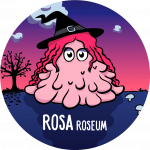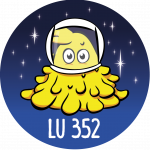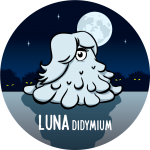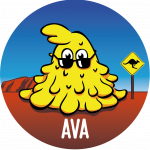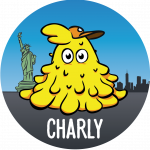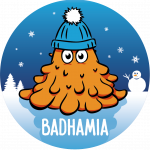You've probably heard of the blob before, but do you really know what it means? Why does his reputation keep growing? And above all, why are scientists so intrigued by this being? Blobshop helps you to lift the veil on this set of questions in order to make you specialists in the field.
You want to adopt a blob?
What is a blob?
At the border between animal, plant and fungus, the blob is a unicellular organism that defies all scientific approaches. Also called physarum polycephalum, the blob is a single-celled species of slime mold in the order Physarales, living in cool, moist environments such as forest leaf litter or dead wood. The blob has the characteristic of being able to take two forms:
- Plasmodium: this is the so-called active form of the blob
- The sclerotium: this is the dormant form of the blob
The plasmodium (the feeding stage of the organism) is most often yellow in color and can reach a size of several square meters. It is often visible to the naked eye and its movement can be compared to that of an amoeba. The blob does not have a permanent shape, but it can produce a network of tubes that grow and branch out to surround food sources. Once in contact with one of its sources, the blob creates a membrane around the food and begins digestion. When conditions are not favorable to it, the blob is able to go into sclerotia, a state of dormancy, which allows it to be kept while waiting for better conditions. And he can remain in this state for many years, which makes him almost immortal...
But that's not all, this organism also has the ability to heal itself after being split into two separate segments. Moreover, it creates two new blobs instead of one. Incredible isn't it?
Its reaction to light is also amazing. Indeed, when exposed to bright light, it retracts from the light source and becomes more dense, conversely when exposed to darkness, it spreads out and fine tendrils extend in the dark in search of nutrients.
The discovery of Physarum polycephalum
It is October 1973. In a town in Texas, a woman is gardening in her garden when she finds a strange yellow mass. Thinking it was a fungus, she covers it with herbicide to get rid of it… But the next day, she realizes that the substance has just doubled in volume. Frightened, she calls the firefighters directly, who decide to burn it down completely. But nothing to do, the thing continues to grow. Then one morning, she disappears. It does not take more for the newspapers to affirm the presence of an extraterrestrial organism and it is from there that the blob begins to be talked about.
#1
The blob, a unique organism
The blob is a strange and mysterious creature. It can survive without a mouth, brain, stomach, or eyes. It has no heart, lungs or kidneys. But he moves and can even learn!
This strange creature looks like an omelette and has no brains or nerves. So how does the blob react when danger threatens? In the 1990s, American scientists experimented by touching the blob with a probe. They then hit him again, but this time closer to the center. Result: when they came back to touch it around its edge, the blob moved away faster than before! In other words, he had learned! He was able to store information about what threatened him and react accordingly. Regarding its speed of movement, it varies according to the body and its appetite. Indeed, when there is no food in the vicinity, the blob moves “very quickly” (4 cm per hour) to find it. When there is plenty of food and the blob is full, it moves slowly to conserve energy.
This physarum has several hundred different sex chromosomes (compared to humans who have only 2). When two blobs mate, the result is not always the same. Normally this means that some of their offspring are male and some are female. Here, things are more complicated, because two blobs of different sex can give birth to new blobs, which themselves can reproduce...
Want to start the experience? Discover our culture kits for Blob!
#3
FAQ
Is the blob dangerous?
In view of the surprising characteristics of the blob, one could ask the question of the dangerousness of this organism. Will he conquer the world in the next few years? Don't worry, the blob is completely harmless to humans and is even beneficial for the planet, in particular, because it allows organic matter to be recycled.
Can you kill a blob?
Although at first glance the blob looks immortal, you should know that there are still things that reach it. For example, some living things like slugs can use blobs as food. The blob is then very fragile: too much light, too extreme a temperature or the absence of food will get the better of it.
How many species of blob are there in the world?
Although difficult to quantify, it would seem that there are more than a thousand species of blob present all over the world.



